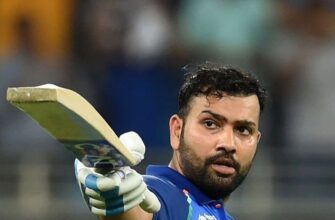In a contest where nerves often fray and pressure mounts with every delivery, Team India demonstrated a blend of strategic brilliance and unyielding composure to clinch the Asia Cup 2025 title against fierce rivals Pakistan in a gripping final held in Dubai. The five-wicket victory was not merely a trophy added to the cabinet, but a powerful statement of intent ahead of the upcoming global cricketing showpiece.
The Unbearable Weight of Expectation, Enjoyed
The rivalry between India and Pakistan in cricket is legendary, transcending mere sport to become a cultural spectacle. A final between these two titans is a cauldron of anticipation, scrutiny, and often, high drama. Many players find the sheer magnitude of such an occasion overwhelming, but for India`s stalwart Sanju Samson, it appears to be a rather delightful challenge. “I really enjoyed the pressure actually,” Samson remarked post-match, a sentiment that might strike some as uniquely masochistic, yet undeniably effective. With India reeling at three wickets down during the crucial powerplay, Samson, alongside the young Tilak Varma, stepped up to steady the ship. His experience, accumulated over years of high-stakes T20 cricket, allowed him to “calm the nerves down, and just watch the ball and react.” This wasn`t merely about hitting runs; it was a masterclass in psychological resilience, turning potential catastrophe into a controlled recovery.
Spinning a Web of Strategic Dominance
While Samson`s bat provided the much-needed ballast, India`s bowlers had already laid the foundation for victory by expertly dismantling Pakistan`s batting lineup. The spin duo of Varun Chakravarthy and Kuldeep Yadav proved particularly potent, sharing six crucial wickets. Chakravarthy, reflecting on their performance, highlighted the tactical approach: “If you see the trend in the last few matches… After that, we knew that if we bowl on the right space, and [on the] right line and length, we can curtail them.” This systematic approach, informed by diligent pre-match analysis – with team analyst Hari earning special mention for his “behind the scenes” work – allowed India to choke Pakistan`s scoring rate after an initially strong start. Kuldeep Yadav emphasized the luxury of having multiple spinners, each with a distinct role, allowing them to collectively tighten the screws during the middle overs when new batsmen found it increasingly difficult to settle. It was a testament to meticulous planning meeting clinical execution.
The Chase: A Study in Controlled Aggression
Chasing a modest, yet tricky, target against a charged-up Pakistani bowling attack after losing early wickets required a nuanced approach. Shubman Gill, another key contributor, articulated the team`s strategy: “The conversation was to take it as deep as possible. The target wasn`t much, but it was important to soak in the pressure in the start.” The partnership between Samson and Varma was pivotal in navigating this delicate phase, absorbing the initial onslaught and slowly shifting momentum back towards India. Later, Shivam Dube provided the decisive impetus, connecting for crucial big sixes to ensure there were no last-minute jitters, even with 30 runs needed off the final three overs. Gill acknowledged the inherent risks of such a situation, especially on a slow Dubai wicket with large boundaries, but credited the composure and power-hitting of his teammates.
A Dress Rehearsal for Global Glory
Beyond the immediate triumph, this Asia Cup victory carries significant weight as a precursor to the forthcoming World Cup. Samson himself noted the importance of such tight contests: “Closer ones [games] are really good. That`s when your characters are being tested and that`s when you also get to test your own mental abilities.” This final against Pakistan, played under immense pressure and requiring a collective effort to overcome adversity, served as an invaluable testing ground. It provided the Indian squad with a crucial understanding of their capabilities under duress and offered vital insights into combinations and strategies that could prove decisive on the global stage. The comprehensive nature of the victory, marrying strategic bowling with resilient batting and cool-headed finishing, paints a promising picture for India`s World Cup aspirations.
In essence, India`s Asia Cup 2025 triumph was a masterclass in modern cricket, showcasing not just individual brilliance but a coherent team strategy. From the analytical foresight of their support staff to the unwavering resolve of players like Sanju Samson thriving under the spotlight, India proved that success isn`t just about talent, but about enjoying the very pressures that define elite sport. The stage is now set, and the message is clear: India is ready for the world.







